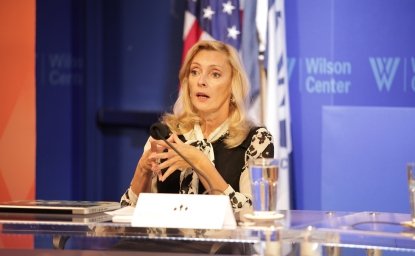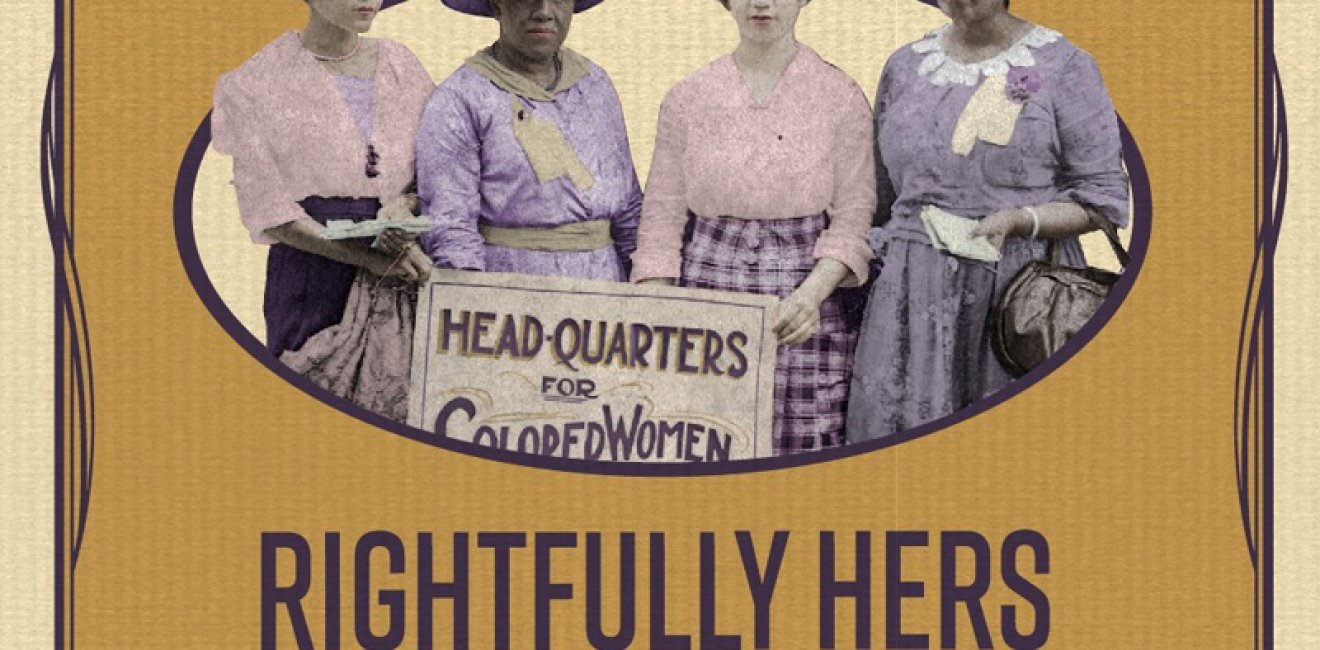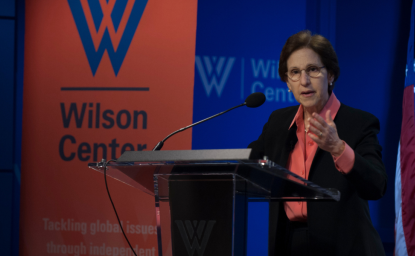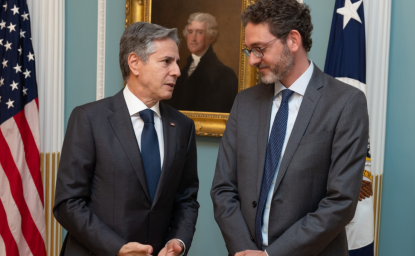
A blog of the Wilson Center
Former Wilson Center Fellows Dr. Robyn Muncy and Dr. Marjorie Spruill recently led the creation of an inspiring and informative exhibit at the National Archives. Rightfully Hers: American Women and the Vote brings to life women’s struggle for the right to participate in their democracy through photos, records, objects, and even rare footage. On display through January 3, 2021, the exhibit highlights the grit and tenacity shown by diverse activists throughout U.S. history who secured voting rights for all American women.
Q&A
Q: The Rightfully Hers: American Women and the Vote exhibit is now open at the National Archives. Can you tell the Wilson Center audience more about the exhibit and how you brought it to life?
Spruill: On this question I defer to Dr. Muncy who worked more directly with the organizers at NARA than I did. My main role was to help them develop the historical story line/script that they used to create the exhibit and help recommend material to be displayed.
Muncy: Rightfully Hers celebrates the centennial of the ratification of the Nineteenth Amendment, sometimes called the Woman Suffrage Amendment.
To commemorate this milestone in the history of American democracy, Rightfully Hers uses documents from the National Archives to tell important stories about American women’s struggle for the vote. The stories range from the late 18th century to the present day and demonstrate the spectrum of reasons that women have fought for the vote as well as the array of tactics they’ve used to win.
We tried to bring alive the long and ongoing movement for women’s suffrage by sharing many different kinds of documents and artifacts produced by the struggle. The documents include handwritten letters from ordinary women, explaining why they wanted the vote; petitions from women and men, urging their representatives to open the polls to women; photographs of massive demonstrations organized to draw attention to the suffrage cause; film footage of women who picketed the White House to protest against their disfranchisement; and the original Nineteenth Amendment itself.
Among the artifacts are uniforms worn by nurses during World War I, whose service to the country became a powerful argument for women’s enfranchisement; campaign jewelry and a dress designed after 1920 to draw women voters into the electoral process; and a Rock the Vote T-Shirt from the 1990s.
Q: Dr. Muncy, Since becoming alumna of the Wilson Center, you have been increasingly involved in public history projects and lectures. What have been some of the highlights of this work?
Muncy: The centennial of the Nineteenth Amendment has generated enormous interest in U.S. women’s history. Museums, libraries, and schools have been putting together all kinds of terrific projects to commemorate the ratification of the amendment, and I have been pulled into several of them. Rightfully Hers is certainly among the most important. But there are others. The National Park Service, for instance, has also been producing wonderful resources online that analyze the struggle for women’s enfranchisement and that illustrate the full range of activists involved in the struggle. I was asked to contribute to that initiative by writing an essay on the relationship between the woman suffrage movement and other social movements. Another really interesting project is the National Votes for Women Trail. For this project, the National Collaborative for Women’s History Sites is partnering with the Pomeroy Foundation to produce markers for five historic sites related to woman suffrage in every state. I am on the Historians Advisory Board for this effort, and we have begun the process of evaluating nominations of sites in several states. The nominations are extremely interesting, and we hope to have all 250 markers up by August 2020.
Q: Dr. Spruill, you’ve authored and edited a number of books on the Women’s Suffrage Movement including your project at the Wilson Center, Women's Rights, Family Values, and the Polarization of American Political Culture. Why are gender issues in national politics important to study today?
Spruill: My areas of research include women's and gender history, American political history, and the history of the American South. My most recent book, the one I was working on while at the Wilson Center, is Divided We Stand: The Battle Over Women's Rights and Family Values That Polarized American Politics (Bloomsbury, 2017, 2018). The book is about the rise of the modern women's rights movement which reached a peak period of success in the 1970s, the rise of a conservative women's movement which organized in opposition and grew stronger as the decade progressed, the congressionally-sponsored women's conferences including the National Women's Conference in 1977 during which tensions between these opposing movements peaked; and the impact on national politics during and after 1980 as the two major political parties "chose up sides" with the Democrats supporting the feminists and the GOP casting itself as the party of "family values." I argue that women - feminist and conservative - played a fundamental role in the shaping of modern American politics and that our highly partisan, bitterly partisan political culture is traceable to 1980 when the two parties lined up on either side of the contentious debates on women's and family issues. I was pleased that the Wall Street Journal described the book as "crucial to understanding American politics over the past 40 years."
Before turning to more recent history, I spent many years researching, writing, and speaking on the woman suffrage movement, and I was actively involved in the celebration of the 75th anniversary of the Nineteenth Amendment. My books on woman suffrage include New Women of the New South: The Leaders of the Woman Suffrage Movement in the Southern States; several edited books. The best known, perhaps, is an anthology, One Woman, One Vote: Rediscovering the Woman Suffrage Movement, the companion volume to a PBS documentary "One Woman, One Vote" published in 1995. In 1995 I also published an edited collection called VOTES FOR WOMEN! The Woman Suffrage Movement in Tennessee, the South, and the Nation. It consists half of essays by scholars and half of primary sources including essays, broadsides, and political cartoons produced both by pro and anti-suffrage forces. It is great to now participate in the suffrage movement centennial. I was the history consultant to the HBO feature film, Iron Jawed Angels. I was delighted when the National Archives invited me to be a consultant for their exhibit and enjoyed the process. I was out of the country when it opened, and need to get up to Washington as soon as I can to see the result. I hear that it's wonderful!
Q: Rightfully Hers: American Women and the Vote will be open through January 3, 2021. What goals do you have for visitors to the National Archives and what do you hope visitors will take away from this exhibit?
Muncy: The most important take away is that the struggle over women’s enfranchisement began with the founding of the Republic and continues to this day. For all its significance, the Nineteenth Amendment did not enfranchise American women. Millions of American women had at least partial suffrage before 1920, and millions were still barred from the polls after 1920. Many barriers to votes for women (and men) remain even today. This struggle is ours.
Another crucial message is that suffragists have represented every demographic group in the United States. The struggle for women’s enfranchisement has included black and white women, Latinas and Asian-descended women as well as American Indians. It has included immigrants and native-born women, working-class and middle-class women as well as those from the economic elite. The woman suffrage movement was not the middle-class, white women’s affair that it is often represented to have been.
Finally, this very diverse movement has been divided nonetheless by race and class, with activists from different groups often organizing separately and with white women sometimes expressing virulent racism. Rightfully Hers does not bury these painful facts because facing the truth about the American past is crucial to moving beyond it.
Q: What’s next for you? Do you have any upcoming projects or future plans you can tell us about?
Muncy: I have an essay on the history of the Equal Rights Amendment coming out soon in the Oxford Research Encyclopedia of American History, and I hope to continue studying the use of the term “working-class” in U.S. political culture since the 1930s. An essay from that research came out recently in Labor: Studies in Working-Class History.
Spruill: At present, with the 2020 election and the suffrage centennial just around the corner, I am doing lots of speaking and consulting on Divided We Stand, the Equal Rights Amendment, and women and politics generally, and a podcast and documentary based on my book, of course on woman suffrage. I am also working with NewSage Press, the publisher of One Woman, One Vote, on a Second Edition that will come out in 2020.
Authors
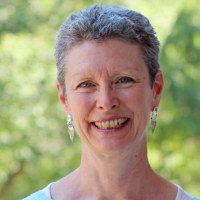
Associate Professor of History, University of Maryland, College Park
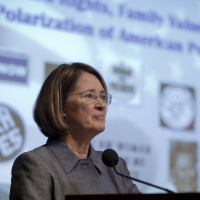
Professor, History Department, University of South Carolina

Global Women's Leadership Initiative
The Global Women’s Leadership Initiative has hosted the Women in Public Service Project at the Wilson Center since June, 2012. The Women in Public Service Project will accelerate global progress towards women’s equal participation in policy and political leadership to create more dynamic and inclusive institutions that leverage the full potential of the world’s population to change the way global solutions are forged. Read more


History and Public Policy Program
A leader in making key foreign policy records accessible and fostering informed scholarship, analysis, and discussion on international affairs, past and present. Read more

Explore More in Scholar & Alumni Spotlight
Browse Scholar & Alumni Spotlight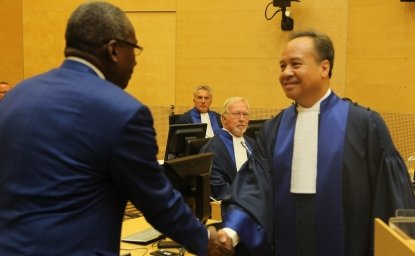
Raul Pangalangan: Bridging Academia, Advocacy, and International Justice
